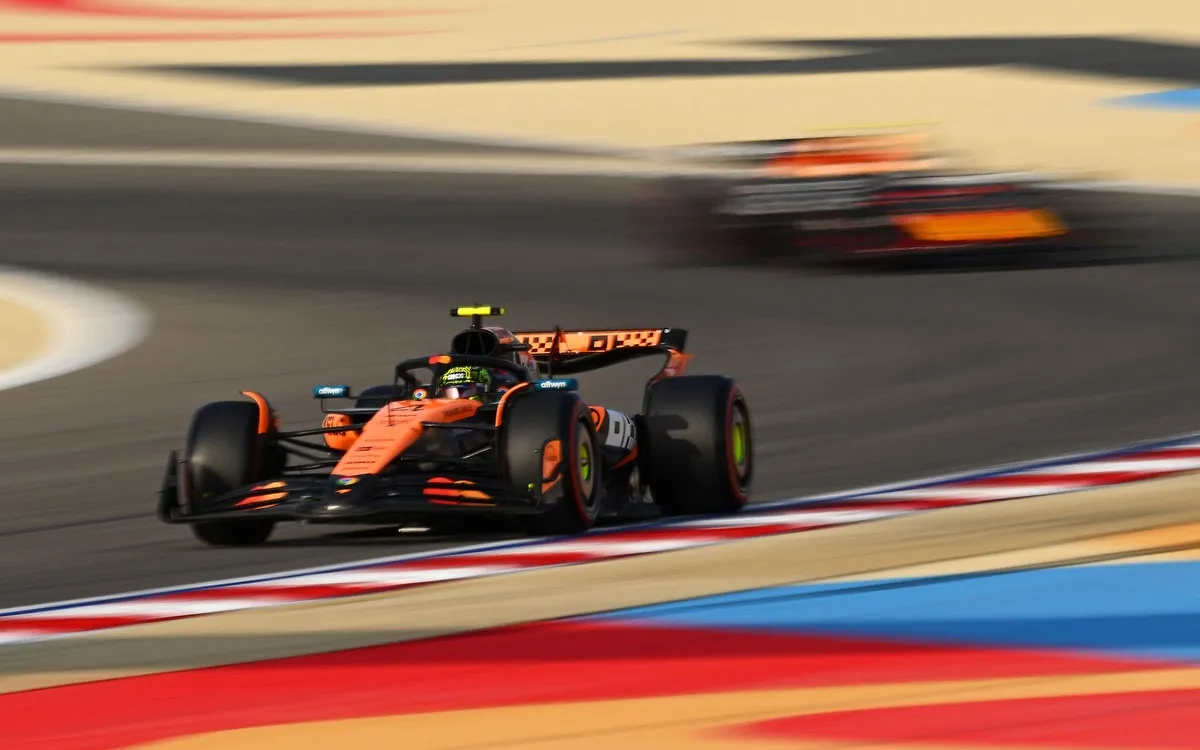
The Bahrain Grand Prix, held in the sweltering heat of the desert, presents a stark contrast to the conditions experienced by teams during testing just eight weeks prior. The high track temperatures, coupled with the Sakhir circuit's notoriously abrasive Tarmac, create a challenging environment that significantly impacts tyre performance. However, the slightly cooler temperatures experienced during the night race may offer some relief to the drivers and teams.
Pirelli, the official tyre supplier for Formula 1, has introduced a variety of strategy options for this race, featuring a mix of all three tyre compounds. While early indications suggest that a two-stop strategy might be the most effective, the possibility of a one-stop strategy cannot be disregarded. Pirelli's Simone Berra commented, "It could be an option, we are not excluding it at all. Obviously, it's very difficult and it will be very much dependent on drivers and team set-up." The adjustments made to the rear axle's starting pressure have notably reduced thermal degradation, yet managing tyre wear during long stints remains a challenge.
Currently, simulations indicate that the traditional two-stop strategy remains the fastest option, despite the potential for a one-stop strategy to be viable. Not all drivers have the same tyre allocation, with 11 drivers retaining two new sets of mediums and one hard. Berra suggests that starting on the medium tyre and switching to hard could be the most advantageous approach. "If you're able to extend the stint on the hard a bit more, you can go with the soft with lower fuel load," he added.
Another strategic possibility involves launching the race on soft tyres to maximize grip, followed by two stints on medium compounds. For those drivers with one new hard and one medium tyre, utilizing all three compounds for a two-stop strategy is essential. The adaptability of the tyre choices is promising for F1 enthusiasts, as it allows for clever tactics to overtake competitors, whether through undercuts or overcuts. Additionally, the presence of three significant DRS zones at the Sakhir circuit enhances the chances of overtaking, ensuring that a repeat of the previous dull one-stopper seen at Suzuka is highly unlikely.
Berra noted the effectiveness of the undercut at this circuit, stating, "It's one of the circuits where it's most powerful in the championship, so it could be an idea to start on the soft and to get rid of it as soon as possible to try to overtake the car in front." This strategy not only excites fans but also benefits drivers who find themselves starting further back on the grid, such as Lando Norris and Max Verstappen.
Despite expressing concerns about his qualifying performance, which placed him sixth on the grid, Norris's impressive long-run pace during practice suggests he could capitalize on his tyre management skills. McLaren team principal Andrea Stella remarked, "Hopefully we will be able to see that being gentle on the tyres will be something that our car can exploit." Both Norris and polesitter Oscar Piastri have access to two new medium sets and a hard tyre, which could be pivotal in their race strategy.
On the other hand, Max Verstappen, who struggled during qualifying, has only one set of medium tyres but two sets of hard tyres available. Berra suggested that Verstappen might consider starting on mediums before switching to hard for the latter part of the race. Red Bull advisor Helmut Marko acknowledged the difficulty of achieving a podium finish for Verstappen but remained optimistic about his ability to advance positions during the race.
Another driver to watch is George Russell, who has been performing well in practice. Although he was relegated from second to third due to a qualifying infringement, his impressive speed and the Mercedes team's lower downforce setup could work to his advantage against competitors like Charles Leclerc. Russell anticipates challenges from McLaren, stating, "I think this is going to be the race which is most biased to the lap times you do in the race." With McLaren's strong performance, they may pit strategically to overtake Mercedes on track.
As the Bahrain Grand Prix approaches, the combination of high temperatures, strategic tyre choices, and the potential for thrilling overtakes promises an exhilarating race for both teams and fans alike.